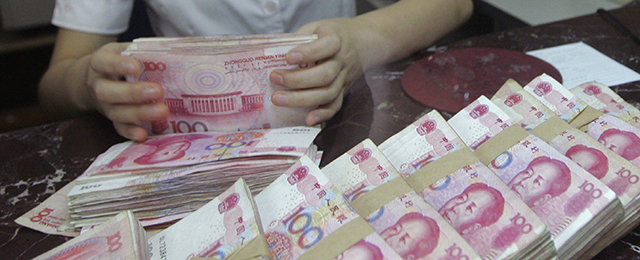Iñigo Isardo, Link Analysis│An exchange rate conflict threatens to complicate US-China trade conflict. As we anticipated yesterday, the escalation of tensions in the trade conflict between the US and China impacted negatively on western markets. After Trump´s threat last week to impose 10% tariffs on an additional 300,000$ of Chinese imports staring 1 September we were awaiting the Chinese response.
Now we know. China has responded with the largest devaluation of its currency the yuan in more than a decade. The People´s Bank of China (PBoC) allowed trading in the yuan to go beyond 7 yuan/dollar, a level not seen since 2008. In addition, the Beijing government has formally asked semi-public companies to not buy US agricultural products, something they had not been doing to any great extent, according to US negotiators.
It should be pointed out that China cannot impose more tariffs on US products, given that it has already imposed them on everything within its reach. It therefore chose to attack Trump with a weapon which the US president will find harder to respond to. On repeated occasions Trump has protested against China for “directing” its economy and promoting the devaluation if its currency to favour its companies.
The Chinese authorities have limited their response to arguing that the yuan´s movements are due to normal market fluctuations. Although in principle they have argued the same this time, an anonymous Chinese central bank spokesman indicated that the movement was a reprisal for Trump´s tariff threats.
In response, in addition to Trump´s complaints about “supposed” manipulation on Twitter and his call for the Federal Reserve to respond, the US Treasury Department has included China in the list of countries that manipulate their currencies. Until now it has avoided doing this on up to 5 occasions, probably to avoid damaging the trade negotiations between the two countries.
The US has not adopted this measure this the Clinton administration did so in 1994, precisely against China. Treasury Secretary Steven Mnuchin will now discuss with the International Monetary Fund (IMF) the negotiation of the elimination of the competitive advantage China has created with this devaluation. This response is mainly symbolic, given that diverse economists doubt China meets the Treasury Department´s technical criteria for manipulation.
After learning about the devaluation at the opening of the session, the red numbers remained in the main European indices until the close, with falls close to or above 2% in all the main markets (FTSE: -2.47%; DAX: 1.8%; CAC: -2.19%), due to mining and industrial interests in China. In addition, the US dollar ceded territory to other important currencies, like the yen, euro and poind, although it revalued 1.5% against the yuan.
The reaction in US indices was even more violent than in Europe, with the main indices in the US stock market registering their largest one day falls this year: DowJones: -2.9% (fifth consecutive fall); S&P 500: -3.0% (sixth consecutive fall); and Nasdaq Composite:-3.5% (sixth consecutive fall). The S&P 500 is already 6% below its highs registered last week. Apple led the falls at 5.2%, given that the new tariffs will affect all its components, although the falls were generalised.
Underlying China´s devaluation as a reprisal for Trump´s additional sanctions, the trade positions of the two countries are further apart than ever. The chances of them reaching agreement seems remote. The introduction of exchange rates as a primary, rather than secondary, element increases uncertainty and fears that a trade conflict could become and exchange rate conflict.





